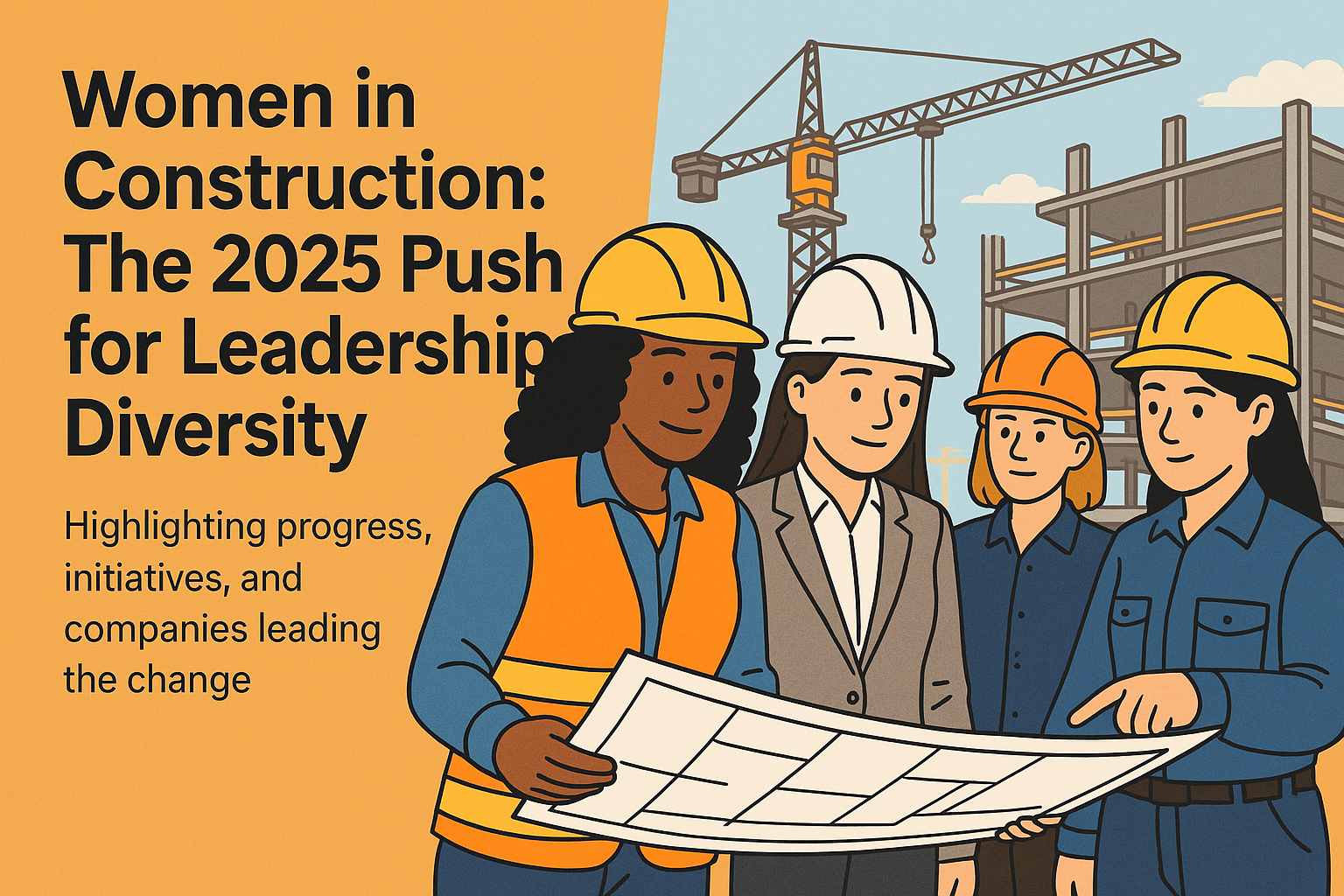Women make up nearly half of the U.S. workforce, yet they continue to represent less than 11% of construction professionals. In 2025, however, the industry is undergoing a major shift. Companies are prioritizing leadership diversity, industry associations are scaling up programs for women, and a growing number of women are stepping into executive and project leadership roles.
From new training pipelines to DEI-driven recruitment strategies, the construction sector is taking meaningful steps toward building a more inclusive future—one where women hold not only tools, but titles.
The 2025 Landscape: Progress and Momentum
The construction industry is experiencing a measurable push for gender diversity, accelerated by labor shortages, shifting workplace cultures, and new corporate commitments.
Key Areas of Progress
- Rising representation in leadership: More women are earning titles such as project manager, superintendent, and VP of construction.
- Increased pay transparency: Companies are publishing role-specific salary ranges to help close wage gaps.
- Expanded mentorship networks: Industry organizations are pairing emerging female leaders with seasoned executives.
Industry reports released throughout 2024 and early 2025 show that companies investing in leadership development for women are experiencing stronger retention rates, improved team performance, and measurable financial gains.
Initiatives Driving Change in 2025
National Training & Apprenticeship Programs:
Organizations like NAWIC (National Association of Women in Construction), Build Out Alliance, and Tradeswomen Taskforce have expanded training programs aimed at helping women gain both technical and leadership skills. These programs focus on:
- Executive leadership development
- Safety training and certifications
- On-the-job learning and apprenticeship placements
Corporate DEI Commitments:
Many companies have publicly renewed their diversity commitments in 2025, focusing on leadership pathways. These initiatives include:
- Structured succession planning for female employees
- Sponsorship programs (not just mentorship)
- Standardized promotion metrics to counteract bias
University Partnerships:
Construction firms are partnering with engineering and construction management programs to create clear entry points for women pursuing technical degrees.
Companies Leading the Way
Several construction and engineering firms have emerged as 2025 leaders in gender diversity and inclusive leadership. Among them:
Turner Construction: A long-standing advocate for diversity, Turner expanded its national “Women@Turner” program in 2024, resulting in a higher rate of women promoted into operational leadership roles in 2025.
Skanska: Skanska’s Women’s Network continues to offer career development workshops, peer mentoring, and leadership pathways that have increased female representation across project management teams.
Jacobs: Jacobs’ “TogetherBeyond” initiative has become a benchmark for corporate DEI. The program strengthened advancement opportunities for women in technical leadership and boosted female leadership representation globally.
Bechtel: The company’s Women@Bechtel program and STEM partnerships helped drive a notable rise in female supervisors and construction managers over the past year.
Kiewit: Kiewit expanded its leadership pipeline program for women in 2025, focusing on providing hands-on leadership experience at major project sites.
Challenges That Remain
Despite progress, hurdles still exist:
- Women remain underrepresented in field leadership roles.
- Many job sites lack family-friendly benefits or flexible scheduling.
- Cultural barriers and stereotypes persist in certain regions and trades.
As companies continue to address these challenges, 2025 is shaping up to be a pivotal year for systemic change.
Why Leadership Diversity Matters
Construction thrives on collaboration, problem-solving, and innovation—all areas where diverse leadership teams outperform less diverse groups. Numerous workforce studies show that companies with higher gender diversity experience:
- Better financial outcomes
- Higher employee satisfaction
- Stronger job site safety performance
- Improved innovation metrics
In an industry facing skilled labor shortages, empowering women is becoming a business imperative, not just a moral one.
Women in construction are gaining ground in leadership roles thanks to expanded training programs, stronger corporate DEI initiatives, and companies committed to inclusive culture. While challenges remain, 2025 marks a major turning point toward a more diverse and competitive construction industry.
FAQs
Are women increasingly taking leadership roles in construction?
Yes. More women are becoming project managers, superintendents, directors, and executives due to targeted leadership development programs.
Which companies are leading the push for diversity?
Turner, Skanska, Bechtel, Jacobs, and Kiewit are among the major firms advancing initiatives to grow female leadership.
What barriers still exist?
Cultural stereotypes, limited flexible work options, and underrepresentation in field roles continue to affect women across the industry.

